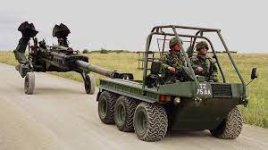You are using an out of date browser. It may not display this or other websites correctly.
You should upgrade or use an alternative browser.
You should upgrade or use an alternative browser.
Infantry Vehicles
- Thread starter KevinB
- Start date
GR66
Army.ca Veteran
- Reaction score
- 3,351
- Points
- 1,160
The only benefit of a UGV that I see would be in a situation where you have limited lift capacity for ATVs. Yes you could have the whole mortar team ride in an ATV but then you're committing a good portion of the payload to passengers instead of ammo.Are we jumping the UGV then?
My point still is if the UGV is there how’d it get there? If it drove so two can a MRZR or ATV. UGVs seem great but I’m constantly left wondering how these light forces that are going where heckles can’t are intending to get them there and sustain them in operations.
If you're putting in your force and you have the lift for all of them to be mounted then ATVs are the way to go 100%. If however the majority of your force is going to be humping it on foot but you just have enough lift for a couple of mechanical mules to follow along carrying the heaviest kit (be that mortars or ammo or water or whatever) then a UGV might come in handy. Fuel supply is the same issue for an ATV or a UGV.
Of course the whole question is really hypothetical when it comes to the CA as has been pointed out we don't really have the capacity for any real air mobile operations at scale (especially in a contested environment against a peer enemy).
markppcli
Army.ca Veteran
- Reaction score
- 4,458
- Points
- 1,140
No, you’ll note the last one is the only one that doesn’t provide mobility to the crew. The horse would support horse mounted troops. Again, please read my above posts and see what I was actually commenting on, you shifting goal posts and going side ways now.View attachment 76520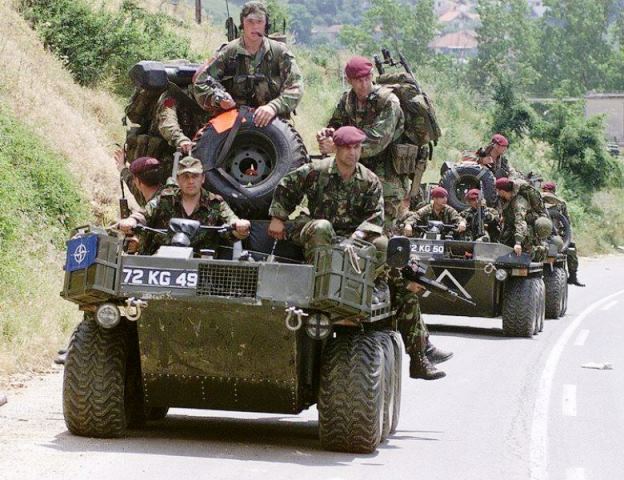
Supacat 6x6 ATMP - 1900 kg curb and 3500 kg GVW

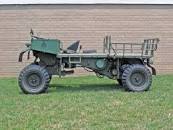
Faun Kraka - 735 kg curb and 750 kg payload


All same same.
The only benefit of a UGV that I see would be in a situation where you have limited lift capacity for ATVs. Yes you could have the whole mortar team ride in an ATV but then you're committing a good portion of the payload to passengers instead of ammo.
Your passengers are your operators. You can have all the ammo in the world if they don’t arrive it’s a waste. If they walk you weapon moves at walking speed and you just increased your logistics tail for what benefit? Mortars in ATVs is already a thing from my understanding with the MRZRs doing the job.
If you're putting in your force and you have the lift for all of them to be mounted then ATVs are the way to go 100%. If however the majority of your force is going to be humping it on foot but you just have enough lift for a couple of mechanical mules to follow along carrying the heaviest kit (be that mortars or ammo or water or whatever) then a UGV might come in handy. Fuel supply is the same issue for an ATV or a UGV.
Probably yes, and that can be a role for a UGV I’m sure. But I was replying to a post linking an ATV with a mortar bolted to it so a system together. That’s where My issue comes from.
Of course the whole question is really hypothetical when it comes to the CA as has been pointed out we don't really have the capacity for any real air mobile operations at scale (especially in a contested environment against a peer enemy).
We could probably lift a Bn in? Sustainment after would be problematic. Fires would be the next issue. It’s worth noting we have MRZRs in light Bns, and a smattering of ATVs across the board, for exactly these purposes already. The MRZR is a trial run from my understanding with the plan to expand in the light Force mobility project.
- Reaction score
- 7,353
- Points
- 1,160
yes, agreed. ATVs, see my post above. Move crew and weapon system. Mission Master / UGV is where my point of contention lies.
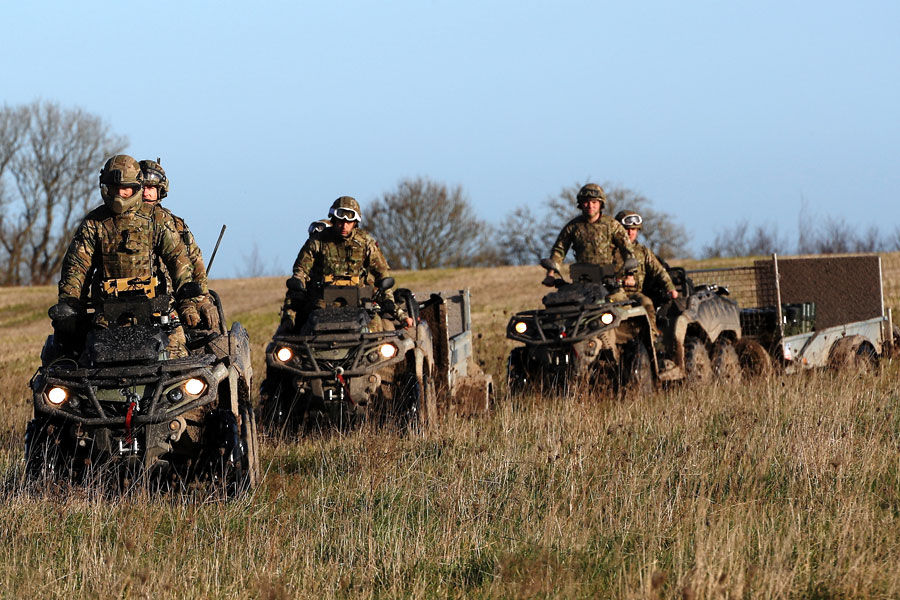
This a Royal Marine 81mm mortar section(?) of two mortars. Only two mortarmen per tube plus a command element of two.
BRP Canam 6x6 - ca 500 kg curb
That is definitely one way to get the job done.
And for the mortar team, or an AD team it can make sense because driving is a secondary skill for the gunner. The vehicle doesn't need a dedicated driver.
For logistics though
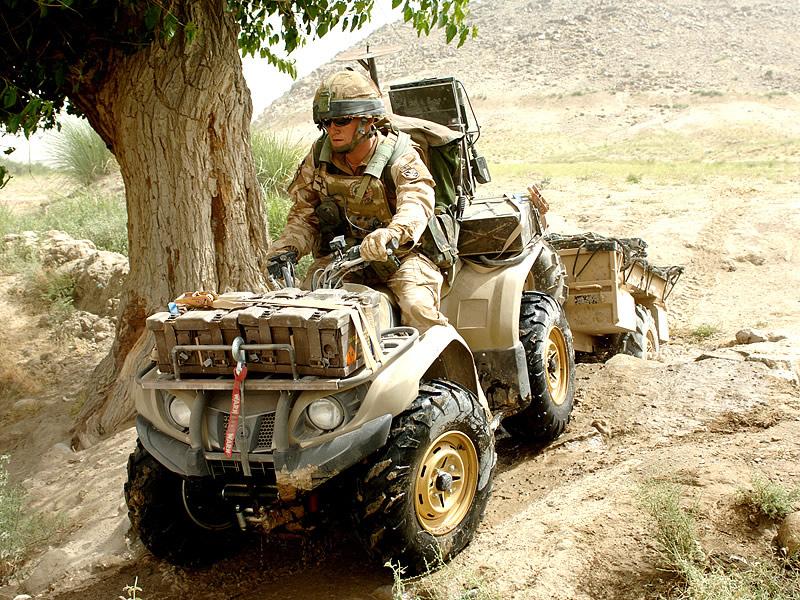
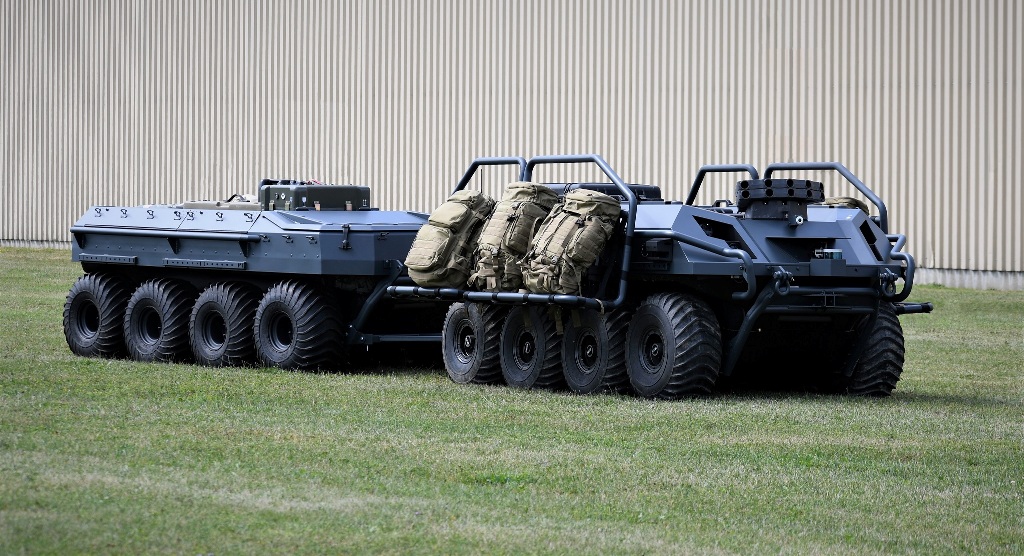
I know, I read it. I agree with parts of it.
I thought it was well argued.
Seen.LAVs and Leo’s are sustained by having integral wheeled fueling vehicles, with links back to fueling points and setting up rolling reopens.
I guess that answer depends on how long the mission, how many people and how many vehicles and how much can be done with a UGV loaded with jerrycans.How does that work in an airmobile setting; we don’t have the lift capacity to be dropping off fuel bladders for the UGV ( presumably picked up by other UGVs?).
And yet your tone begs to differ. My comment was purely about the value of a UGV carrying a mortar when you can have the whole team mounted together. You took exception, you changed tone.
If I misunderstood you I apologise.
Part of the Light issues in the CAF is the Rotary Wing fleets are too small to be effective, for anything larger than a Battalion.
- and that takes over 80% of the Rotary fleet to move in one lift
So how effective can we be lifting and supporting light companies operating at large? Do we need to be able to drop all three companies of a battalion in one mission? If we want to conduct an assault bigger than a company I take your point but what can we get done with light companies patroling a sector with heli support, or for that matter, air drops, on call?
Absolutely agreed.The problem that has always crippled the Light Force construct in Canada is support beyond road.
LAV and Leo travel roads (relatively) and so support can often be moved via road to them.
No. Exactly. Which means you have to carry it in with you, work with caches, or have organization sized to meet the capabilities of the support available. And Canada is not without means of delivering support, even if limited to the RCAF's fleet.If you walked in, jumped in, or were dropped by Helo, the same support options for a road based system doesn’t exist.
I think he’s just pointing out the obvious support infrastructure issues to any Light Force enabler
My vision of a light force operating in Canada is one that operates as companies, maybe a battalion. Even if a Brigade were tasked to an area would it be reasonable to drop and support and recover the entire Brigade as an entity.
In Afghanistan we went in with Iltis's and Bv206s and then by air, over time, with the allies and commercial support we ended up with a large fleet of Leos, LAVs, RG31s, GWagens, Griffons and Chinooks.
We can't drop an entire Brigade. I don't know if even the Brits can do that - they seem to be geared towards a Battalion drop. Just because we have limitations shouldn't preclude us from pursuing a Course of Action. Especially if there is support for filling in gaps. Finding enablers we can afford.
- Reaction score
- 7,353
- Points
- 1,160
We could probably lift a Bn in? Sustainment after would be problematic. Fires would be the next issue. It’s worth noting we have MRZRs in light Bns, and a smattering of ATVs across the board, for exactly these purposes already. The MRZR is a trial run from my understanding with the plan to expand in the light Force mobility project.
We may employ our entire fleet of C17s, C130s, CH147s and 146s to deploy a force but once they are on the ground what do we need to sustain them? How much can be done with a pair of C130s, 4 CH147s and a dozen 146s? Comparable, I believe to the Afghanistan, Syria and Mali commitments?
GK .Dundas
Army.ca Veteran
- Reaction score
- 1,216
- Points
- 960
We can't drop an entire Brigade. I don't know if even the Brits can do that - they seem to be geared towards a Battalion drop. Just because we have limitations shouldn't preclude us from pursuing a Course of Action. Especially if there is support for filling in gaps. Finding enablers we can afford.
I seem to recall the last Brit Brigade drop occurred in the 90's. They should still have the airlift capability.
What they don't have is a Brigade capable of being dropped currently. Or at least structured as airborne Brigade.
I seem to recall it has one airborne Battalion and two light infantry Battalions plus of course supporting arms.
It's been awhile since I've really looked this sort of thing.
- Reaction score
- 7,353
- Points
- 1,160
Your passengers are your operators. You can have all the ammo in the world if they don’t arrive it’s a waste. If they walk you weapon moves at walking speed and you just increased your logistics tail for what benefit? Mortars in ATVs is already a thing from my understanding with the MRZRs doing the job.
Earlier I referenced the Goose Green battle. The lack of transport meant that the number of tubes carried was limited and the amount of ammunition available was limited. The mortarmen were in the battle with the tubes and ammunition they had even though they had to slog their way there.
By and large, my understanding, is that in that campaign soldiers walked. Any transport available was used for logistics - soldiers make inefficient mules, despite the best exertions of @daftandbarmy.
daftandbarmy
Army.ca Dinosaur
- Reaction score
- 26,649
- Points
- 1,160
Earlier I referenced the Goose Green battle. The lack of transport meant that the number of tubes carried was limited and the amount of ammunition available was limited. The mortarmen were in the battle with the tubes and ammunition they had even though they had to slog their way there.
By and large, my understanding, is that in that campaign soldiers walked. Any transport available was used for logistics - soldiers make inefficient mules, despite the best exertions of @daftandbarmy.
Yeah, about that....
"After six days in truly appalling conditions on Sussex Mountain, 27 men had been evacuated, 12 of those as a result of trench foot. Finally, by the evening of 26 May, all of the 450 standing soldiers of 2 Para would push down to take the House - led out again by 'D' Company, who sidled packs and advanced in simple fighting order, but weighted down with an incredible amount of ammunition and rations, ready to fight to the last if required.
The Company swore and stumbled its way through the black night, across unseen streams, bogs and the rock-strewn landscape. By 3 a.m. it put up the signal confirming the objective had been taken, with the trails of the Battalion following suit. Soaked and frozen, they settled down for three hours sleep.
Requests for light tanks were made, but petrol was short and the request was rebuffed. The same happened with requests for tracked vehicles to move the Battalion's heavy guns. As a result, just two of the Battalion's eight mortar tubes made it to Camilla Creek.
When light broke on 27 May, the position was clearly vulnerable for all too see. Visibility beyond 500 yards was impossible and they were open to attack from all sides. Nonetheless, it was decided to take shelter together during the day, in preparation for their battle that night."
markppcli
Army.ca Veteran
- Reaction score
- 4,458
- Points
- 1,140
I seem to recall the last Brit Brigade drop occurred in the 90's. They should still have the airlift capability.
What they don't have is a Brigade capable of being dropped currently. Or at least structured as airborne Brigade.
I seem to recall it has one airborne Battalion and two light infantry Battalions plus of course supporting arms.
It's been awhile since I've really looked this sort of thing.
- Headquarters, 16th Air Assault Brigade, at Merville Barracks, Colchester Garrison[25][26][27][28][12]
- 2nd Battalion, The Parachute Regiment(Airborne Infantry), at Merville Barracks, Colchester Garrison[12][29]
- 3rd Battalion, The Parachute Regiment(Airborne Infantry, at Merville Barracks, Colchester Garrison[12][29]
- 4th Battalion, The Parachute Regiment (Army Reserve), at Thornbury Barracks, Pudsey[12][29][30]
- 2nd Battalion, The Royal Gurkha Rifles (Air Assault Infantry), at British Forces Brunei (Will restructure to Folkestone in 2022)[12]
- 1st Battalion, The Royal Irish Regiment (27th (Inniskilling), 83rd, 87th and The Ulster Defence Regiment) (Light Recce Strike Infantry), at Clive Barracks, Tern Hil (Will restructure to Edinburgh by 2027)[12]
- 7th Parachute Regiment, Royal Horse Artillery(Airborne Close Support Artillery), at Merville Barracks, Colchester Garrison[29] (12 x L118 105mm light guns[31]) [12]
- 23rd Parachute Engineer Regiment, Royal Engineers (Close Support Air Manoeuvre Engineers), at Rock Barracks, Woodbridge[12][29][32][33][34][35]
- 299 Parachute Squadron (Army Reserve), in Wakefield, Gateshead, and Woodbridge[12][36][37]
- 13th Air Assault Support Regiment, Royal Logistic Corps (Air Assault Logistics), at Merville Barracks, Colchester Garrison[12][29]
- 16th Medical Regiment, Royal Army Medical Corps (Air Manoeuvre Medical Regiment), at Merville Barracks, Colchester Garrison[12][29][38]
- 144 Parachute Medical Squadron (Army Reserve), in London, Cardiff, Glasgow, and Nottingham[12][39]
- 216 Parachute Signal Squadron, Royal Corps of Signals (Communication and Information Support),[40] at Merville Barracks, Colchester Garrison[12][41]
- The Pathfinder Platoon (Pathfinders), at Merville Barracks, Colchester Garrison[12]
- Reaction score
- 16,961
- Points
- 1,260
I’m a firm believer that any Light Force that is inserted by Parachute or Air Landing (fixed or rotary wing) needs to have an extraction plan, and/or a robust support plan.We may employ our entire fleet of C17s, C130s, CH147s and 146s to deploy a force but once they are on the ground what do we need to sustain them? How much can be done with a pair of C130s, 4 CH147s and a dozen 146s? Comparable, I believe to the Afghanistan, Syria and Mali commitments?
The degree of activity will dictate the degree of support needed.
Troops moving in arduous terrain in extremes of temperatures will require more food and water than relatively static forces in temperate climates.
Troops engaged in active combat will also have ammunition resupply and Medivac requirements and replacement personnel.
Depending on the opposition, your rotary wing forces may be limited to night only, or very limited flight profiles. Also your Griffon Force may be even further limited to playing escort duty.
The issue is for worse case scenarios, the CAF doesn’t have enough airlift to support a Brigade in combat.
I also tend to think that it doesn’t have enough CA dedicated rotary wing to support a BtlGrp considering CANSOF assets would also be needing segments of those.
All you really have for the CA is around 4 dozen Griffon’s for UH work (SAR, Trg and Escort birds making the fleet UH numbers low) and 15 Hooks, of which I suspect that at least 1/3rd of the fleet is fairly dedicated to CANSOF.
So what can you do with 48 Griffons and 10 Hooks?
Basically 2 Griffon / Section Cbt loaded
1 Cbt loaded platoon / Hook.
So basically a Bn - with no vehicles in 1 lift.
So if you want to add vehicle support to airmobile forces - you are looking at Company Group type actions.
IMHO this is yet another example of the CA not really thinking any Light doctrine through seriously, or there would have been money routed from the CA to the RCAF for more Hooks and a Griffon replacement program.
quadrapiper
Sr. Member
- Reaction score
- 346
- Points
- 810
Really not my field...Part of the Light issues in the CAF is the Rotary Wing fleets are too small to be effective, for anything larger than a Battalion.
- and that takes over 80% of the Rotary fleet to move in one lift.
The problem that has always crippled the Light Force construct in Canada is support beyond road.
LAV and Leo travel roads (relatively) and so support can often be moved via road to them.
If you walked in, jumped in, or were dropped by Helo, the same support options for a road based system doesn’t exist.
Getting a feeling that a major expansion of the Chinook fleet would be of value, and perhaps more important than which heir to the mule, Jeep, and Universal Carrier gets into play.
daftandbarmy
Army.ca Dinosaur
- Reaction score
- 26,649
- Points
- 1,160
So 2(+1) airborne Bns and an Air assault… plus what ever light recce strike Infantry means. Very much jumpable.
- Headquarters, 16th Air Assault Brigade, at Merville Barracks, Colchester Garrison[25][26][27][28][12]
- 2nd Battalion, The Parachute Regiment(Airborne Infantry), at Merville Barracks, Colchester Garrison[12][29]
- 3rd Battalion, The Parachute Regiment(Airborne Infantry, at Merville Barracks, Colchester Garrison[12][29]
- 4th Battalion, The Parachute Regiment (Army Reserve), at Thornbury Barracks, Pudsey[12][29][30]
- 2nd Battalion, The Royal Gurkha Rifles (Air Assault Infantry), at British Forces Brunei (Will restructure to Folkestone in 2022)[12]
- 1st Battalion, The Royal Irish Regiment (27th (Inniskilling), 83rd, 87th and The Ulster Defence Regiment) (Light Recce Strike Infantry), at Clive Barracks, Tern Hil (Will restructure to Edinburgh by 2027)[12]
- 7th Parachute Regiment, Royal Horse Artillery(Airborne Close Support Artillery), at Merville Barracks, Colchester Garrison[29] (12 x L118 105mm light guns[31]) [12]
- 23rd Parachute Engineer Regiment, Royal Engineers (Close Support Air Manoeuvre Engineers), at Rock Barracks, Woodbridge[12][29][32][33][34][35]
- 299 Parachute Squadron (Army Reserve), in Wakefield, Gateshead, and Woodbridge[12][36][37]
- 13th Air Assault Support Regiment, Royal Logistic Corps (Air Assault Logistics), at Merville Barracks, Colchester Garrison[12][29]
- 16th Medical Regiment, Royal Army Medical Corps (Air Manoeuvre Medical Regiment), at Merville Barracks, Colchester Garrison[12][29][38]
- 144 Parachute Medical Squadron (Army Reserve), in London, Cardiff, Glasgow, and Nottingham[12][39]
- 216 Parachute Signal Squadron, Royal Corps of Signals (Communication and Information Support),[40] at Merville Barracks, Colchester Garrison[12][41]
- The Pathfinder Platoon (Pathfinders), at Merville Barracks, Colchester Garrison[12]
Yes, but remember the main focus was, and remains, 'Out of NATO area operations'.
Think NEO Ops in third world countries where the locals were going to turn British Nationals into hamburger helper, like Kolwezi.
This formation would likely not survive in a high intensity theatre of operations, or could only be used for coup de main style operations, with alot of air cover.
WLSC
Sr. Member
- Reaction score
- 488
- Points
- 840
Our mortar platoon did 30 miles carrying the 81mm. We were the ammo mules.
Not ideal, but it sure surprises people who are like "Hey, how did they get mortars way up there behind us?" which, sometimes, is the goal of course
30 miles
You’re talking 60mm, right
WLSC
Sr. Member
- Reaction score
- 488
- Points
- 840
Both. The vehicle needs to be light enough to be deployed by helicopter so that it can stay on the ground with the troops when the helicopter is grounded by weather or lack of fuel.
A real Jeep size vehicle is way better IMHO.
daftandbarmy
Army.ca Dinosaur
- Reaction score
- 26,649
- Points
- 1,160
Our mortar platoon did 30 miles carrying the 81mm. We were the ammo mules.
Not ideal, but it sure surprises people who are like "Hey, how did they get mortars way up there behind us?" which, sometimes, is the goal of course
Training included occasional 50 milers, so the troops were fairly well prepared, but the Mortar and Anti-tanks were legendary 'mules'
- Reaction score
- 16,961
- Points
- 1,260
I’d argue that is situationally dependent.A real Jeep size vehicle is way better IMHO.
Some missions work better with ATV style systems, and other with a more Jeep’ish type systems, or even larger vehicles.
Similar to snowmobiles versus BV206 etc.
Either way, the Griffon isn’t lifting much, so your looking at an ATV/snowmobile sized package for those, anything larger needs a Hook, or theft of MH or SAR birds
- Reaction score
- 7,353
- Points
- 1,160
A real Jeep size vehicle is way better IMHO.
My concern with the Jeep sized vehicle is that it is too heavy (1500 to 2000 kg) to lift in the helicopter fleet we have (Griffons) and once on the ground there aren't many places a jeep could go that a LAV couldn't. In fact I suspect the LAV beats the Jeep on the ground except in really tight spaces.
We could help the problem by getting bigger Utility Helicopters (swapping Griffon's for Kevin's Blackhawks) or by getting more Chinooks.
To be honest I think getting more Chinooks is a more likely solution than replacing the Griffon fleet.
As to Ground Transport - Argo and BRP are both Canadian suppliers that have already demonstrated some export potential in manned configurations.
UGVs..... we'll get them after everybody else starts fielding them.
Edit: Another advantage of the smaller vehicles is that even with a fleet of Blackhawks and Chinooks more of them could be carried. That means more weight can be carried on the ground making the ground force more capable and giving it longer legs.
WLSC
Sr. Member
- Reaction score
- 488
- Points
- 840
My concern with the Jeep sized vehicle is that it is too heavy (1500 to 2000 kg) to lift in the helicopter fleet we have (Griffons) and once on the ground there aren't many places a jeep could go that a LAV couldn't. In fact I suspect the LAV beats the Jeep on the ground except in really tight spaces.
We could help the problem by getting bigger Utility Helicopters (swapping Griffon's for Kevin's Blackhawks) or by getting more Chinooks.
To be honest I think getting more Chinooks is a more likely solution than replacing the Griffon fleet.
As to Ground Transport - Argo and BRP are both Canadian suppliers that have already demonstrated some export potential in manned configurations.
UGVs..... we'll get them after everybody else starts fielding them.
Edit: Another advantage of the smaller vehicles is that even with a fleet of Blackhawks and Chinooks more of them could be carried. That means more weight can be carried on the ground making the ground force more capable and giving it longer legs.
Chinooks, we have them just have more. Griffins are no good for cargo. Escort, support, recce, yes but not more IMHO.
Jeep type can do long road move and off-road. Lighter vehicle are not really appropriate. I don’t say I don’t see a need for UTVs, I’m saying we should not base our light fleet on those.
- Reaction score
- 7,353
- Points
- 1,160
Chinooks, we have them just have more. Griffins are no good for cargo. Escort, support, recce, yes but not more IMHO.
Jeep type can do long road move and off-road. Lighter vehicle are not really appropriate. I don’t say I don’t see a need for UTVs, I’m saying we should not base our light fleet on those.
Fair.
We agree on having more Chinooks. I also agree that the Griffs are limited but I think we can ask more of them than we are.
Yes ATVs are not the solution for moving the force BUT ATVs (and even UGVs) should be in our inventory of available assets for issuance to units task with heliportable missions. Not particularly air assault but just even logistic moves.
The Jeep makes a useful Cavalry surrogate IMO but it isn't a suitable logistics vehicle. Each driver (worse if you assume a crew of two) will only trasnport 2 or 3 soldiers and their kit. We end up with the same problem we have with the Griffon.
For the "Light Force" transport is best supplied by vehicles like these

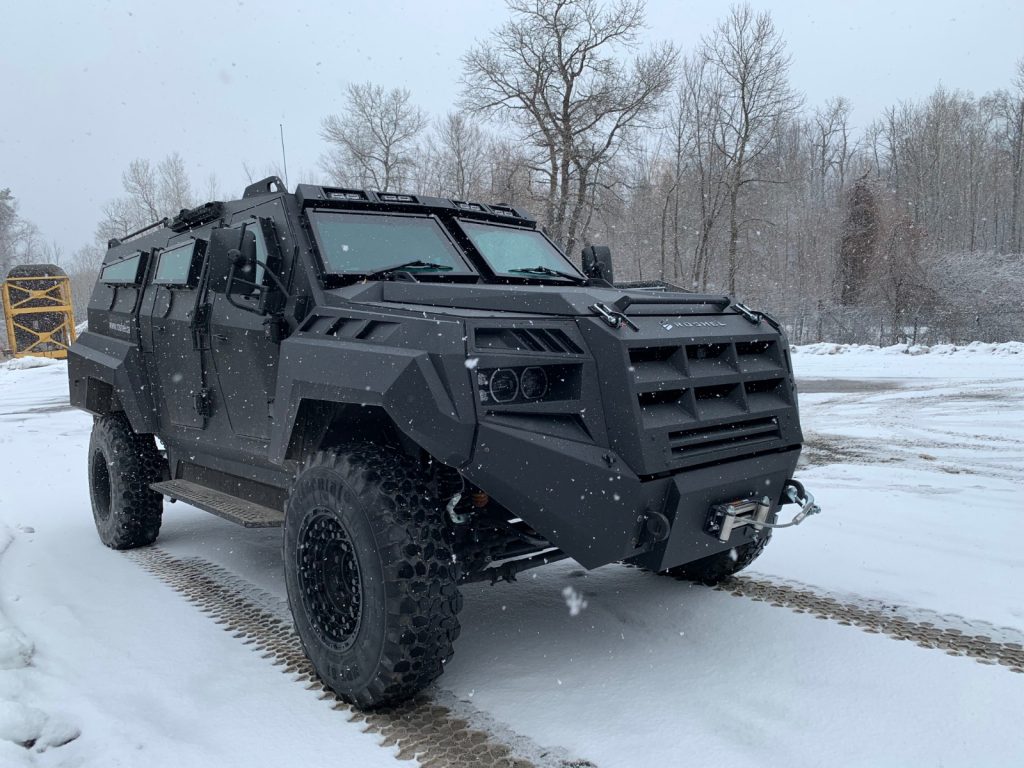

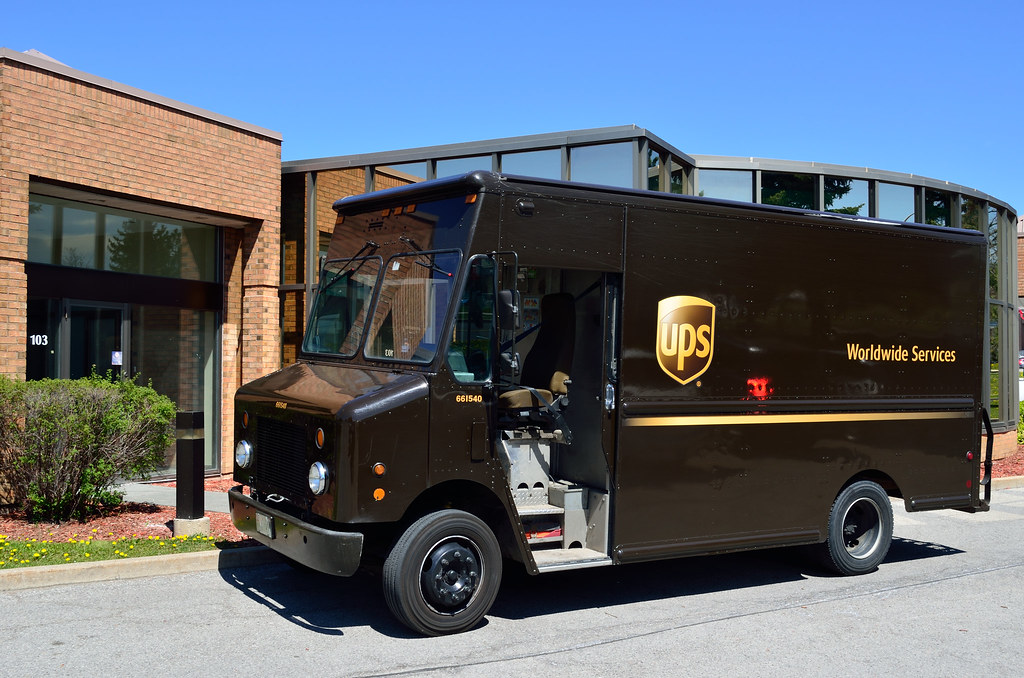
With a specialty fleet of
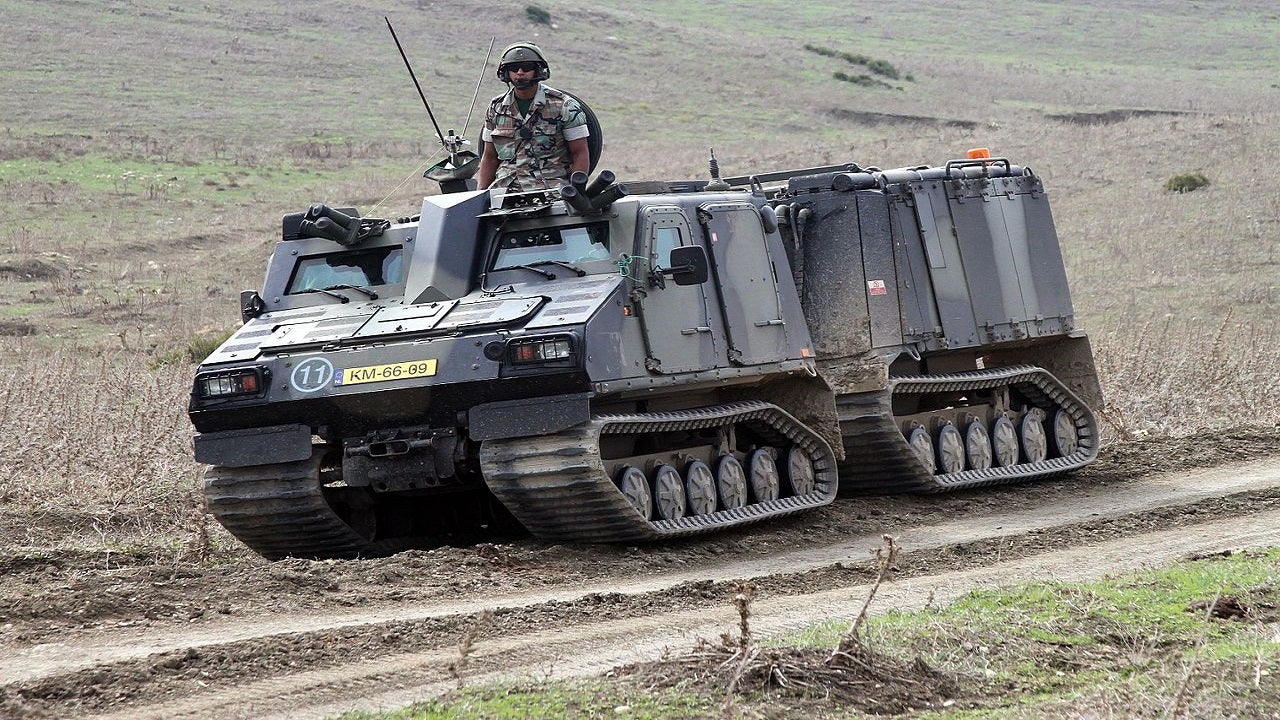
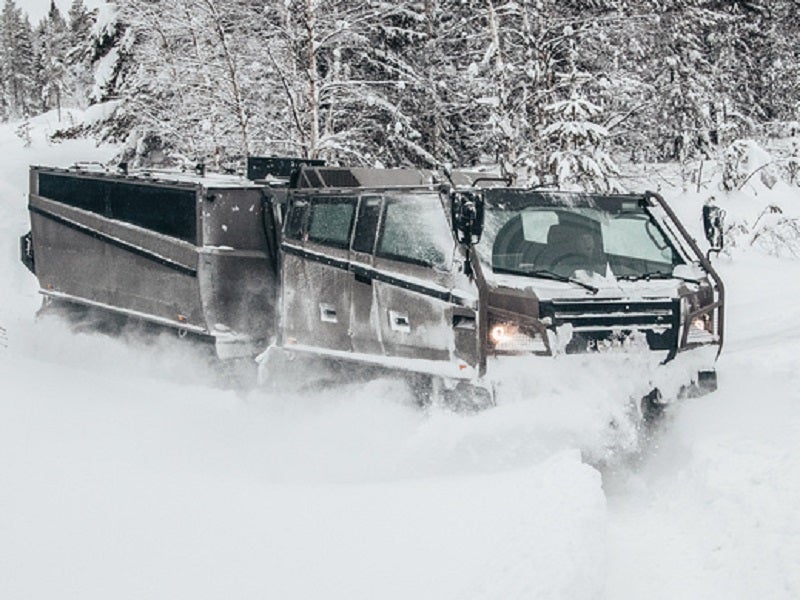
We talk about the US Heavy Divisions and their Abn and Air Assault Divisions but the majority of their army is made up of Infantry Brigade Combat Teams, both in the Reserve and the Active force. Almost all Divisions have some helicopter support. Two of them have nothing but helicopter support.
ABCTs have armoured vehicles to operate on the ground.
All other BCTs are IBCTs that have HMMWVs and Light Trucks to move them around. Or in 6 cases Strykers and in Alaska the Bvs.
Those vehicles don't have to be section vehicles. They could be held in the Bn Transport Platoon or the Brigade Transport Coy.
Similar threads
- Replies
- 13
- Views
- 13K

